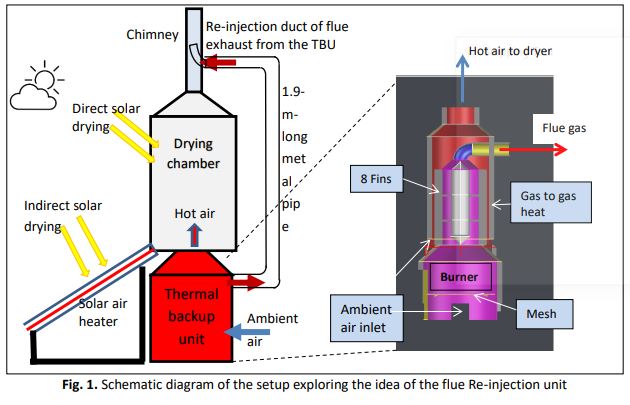Thermal Analysis of Tilapia Fish Drying by Hybrid Solar Thermal Drying System
DOI:
https://doi.org/10.37934/arfmts.90.1.115129Keywords:
Fish drying, hybrid solar thermal dryer, solar thermal, thermal backup, Tilapia fishAbstract
The present work presents a hybrid solar thermal drying of Tilapia fish to improve the product quality and satisfy the importers. The developed hybrid dryer utilized direct solar drying, a solar air heater and a thermal backup unit which sustains the drying process during the night, cloudy and rainy weather conditions. Besides, a new feature of the developed dryer utilizes the flue gas exhausted from the thermal unit to enhance the updraft in the drying chamber by re-injection of the flue gases in the chimney. The initial moisture content of the Tilapia fish used in the investigation was 246.6% on a dry basis, equivalent to 74% on a wet basis. The investigations were repeated three times on different days. Experimental results showed that the moisture content was reduced to an average final of 17.0% db (5.0% wb) within 17.5 hours, while in the open sun drying, it required around 48-72 hours. Hybrid solar drying required around 72% shorter time than open sun drying. The average overall drying efficiency of the developed system for drying Tilapia fish was 13.0%. The Re-injection technique used in the present hybrid solar-thermal system has excluded the need for an electric source for air extraction from the drying chamber, which is highly desired in the rural and fishery regions.
Downloads
































